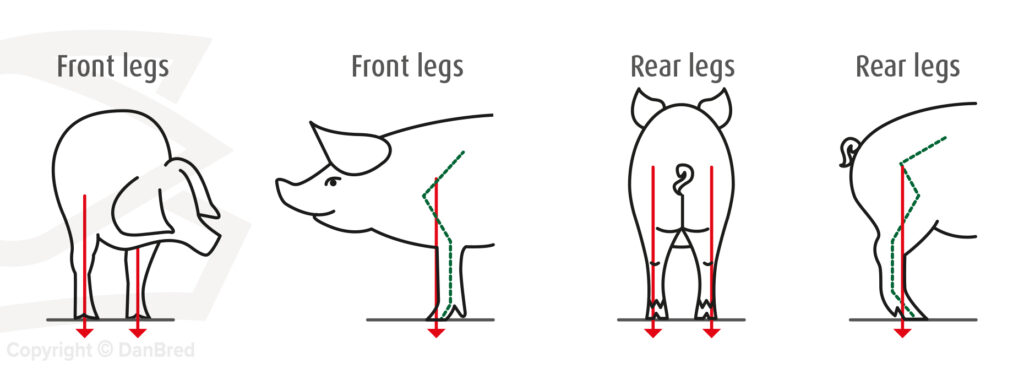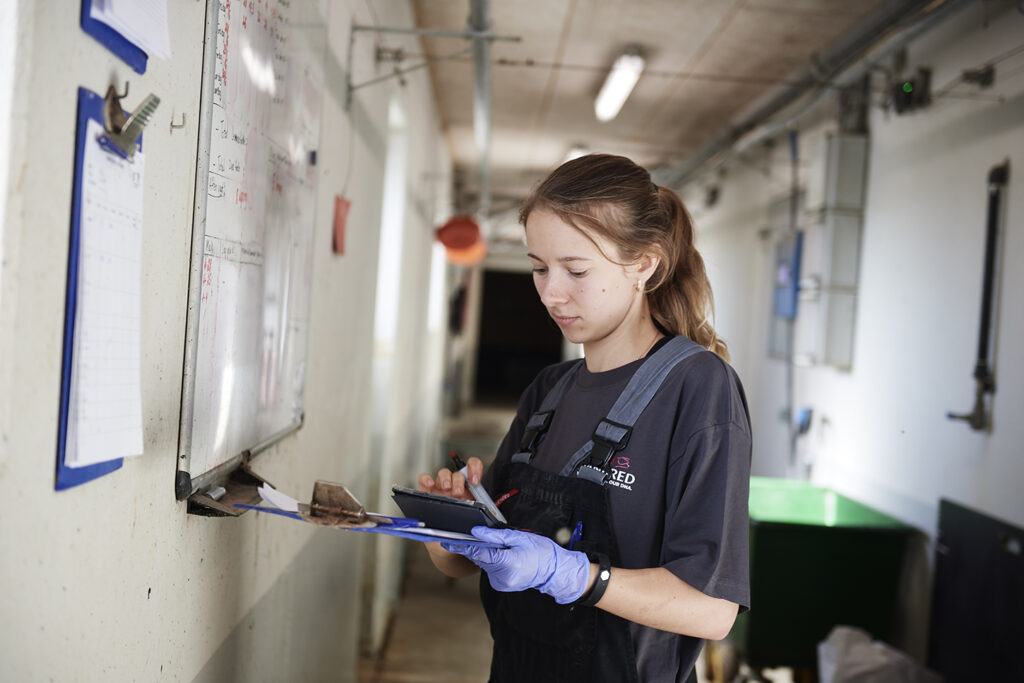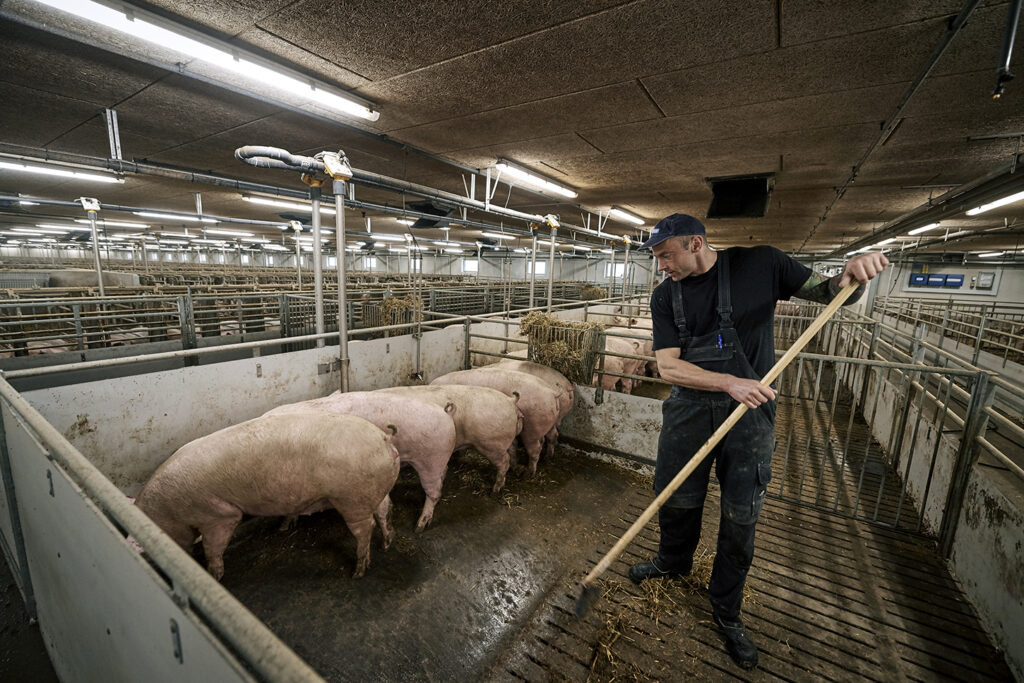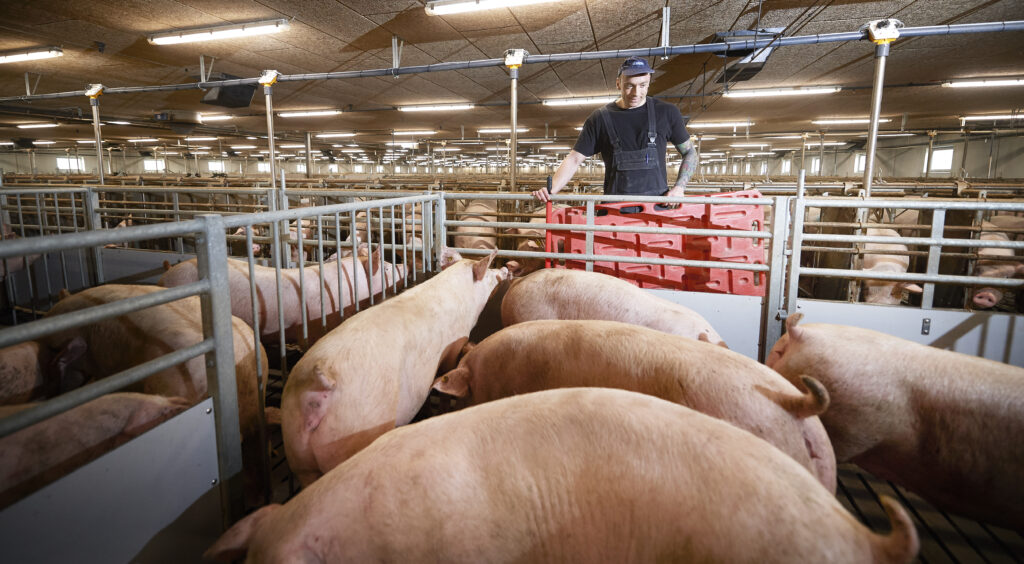New arrivals – Inspect and assess breeding stock
Content
Proper selection
High health DanBred breeding stock represent the future of the herd- proper selection and management upon arrival will help form the basis for best possible production and lifetime performance.
Inspection and assessment of breeding stock upon arrival
High health DanBred breeding stock are well known for world-class performance- delivering large and robust litters with an extraordinary genetic potential for growth. New breeding animals represent the future of the herd which is why proper selection and management upon arrival is the initial step for achieving the best possible production and lifetime performance.
Laying the foundation for successful introduction
DanBred breeding stock bought for as replacement animals will be genetically superior, structurally robust and have a declared health status. At selection, the DanBred animals are genetically assessed on the basis of their breeding index. The DanBred breeding program is officially registered, which means that all DanBred breeding animals- no matter the breed- have an official pedigree, providing full transparency. This ensures that all DanBred partners can follow the breeding value for their animals and in this way, ensure continued genetic progress by choosing only the best animals for next generation.
Aside from ensuring that the breeding animals have the best genetic basis, all DanBred breeding stock undergo a thorough visual examination and quality assurance where conformation, feet, legs, weight and age are evaluated in regards to optimum longevity and increased productivity.
Visual evaluation starts with the feet and legs. An ideal foot is visibly healthy and is of equal length and size. All toes point forward and the legs are straight. Front and back legs are aligned and the rear hocks and front knee should be angled so as to not put extreme pressure on the leg joints when the animal is walking. The pastern should be relatively soft and the foot should be flat against the floor with dew claws only just touching the ground. The foot must not rotate or turn when the pig walks (DPRC, 2007).

Transport can temporarily weaken the legs of the animals, which is why the receiving quarantine should always have soft bedding available where possible (taking into consideration the manure system and biosecurity) (DPRC, 2007).
DanBred animals are delivered with a declared health status- ideally the health status of the incoming animals are matched with the receiving herd status to ensure a smooth transition. At delivery, a vaccination strategy has been initiated for all animals, so it is important to make sure to inform the herd veterinarian of the vaccinations already administered in order for this to be registered correctly in the on farm veterinary health plan (DPRC, 2007).
Easy steps for receiving DanBred breeding stock

 Correct management on arrival will form the basis for best possible production and lifetime performance
Correct management on arrival will form the basis for best possible production and lifetime performance
- Make sure all the animals get fresh water and feed as soon as they arrive.
- Check all animals for signs of disease or defects– repeat this every day of quarantine.
- Check the animals are correctly registered in the delivery notes.
- Check that weight and age match the requested.
- Note the vaccinations administered by the supplier and inform the herd veterinarian of this.
- Report any questions within 48 hours of receiving the animals for quick resolution or follow up.
Sort breeding stock upon arrival
 Sort all animals by sex, age, weight and if possible by genetic line when entering them into quarantine.
Sort all animals by sex, age, weight and if possible by genetic line when entering them into quarantine.
Provide management with a daily updated spreadsheet containing:
- Pen ID.
- Animal ID per pen.
- Age and approximate weigh of each animal.
- Vaccination(s) dates.
- Dates for blood test(s).
- For gilts:
- Expected date of first heat.
- Date for starting heat induction for each pen.
- Date of first heat for each gilt.
- For boars:
- Development in daily gain.
- Date for training start up.
- Date of first collection.
References
Danish Pig Research Centre (DPRC) (2007): Manual – Håndtering af polte. SEGES Videncenter for Svineproduktion. Retrieved 25/02/19 https://svineproduktion.dk/publikationer/kilder/lu_rapporter/manual_haandtering_polte




